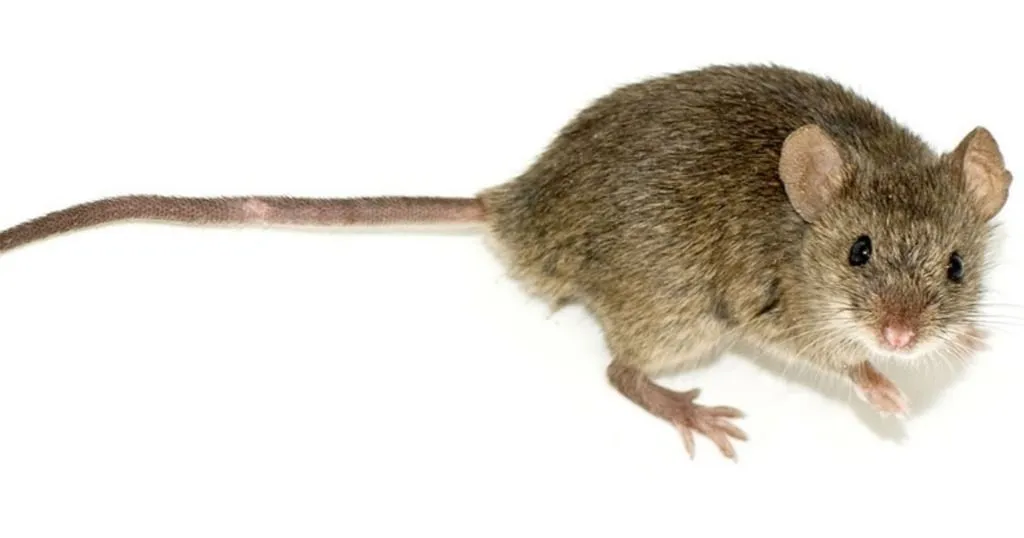Assessing motor deficits in mice following traumatic brain injury
Today Marcelle Cline and Donna Cross are so kind to share their insights on testing TBI mice with the CatWalk XT system.
Posted by
Published on
Thu 31 Mar. 2016
Topics
| CatWalk XT | Mice | Traumatic Brain Injury |
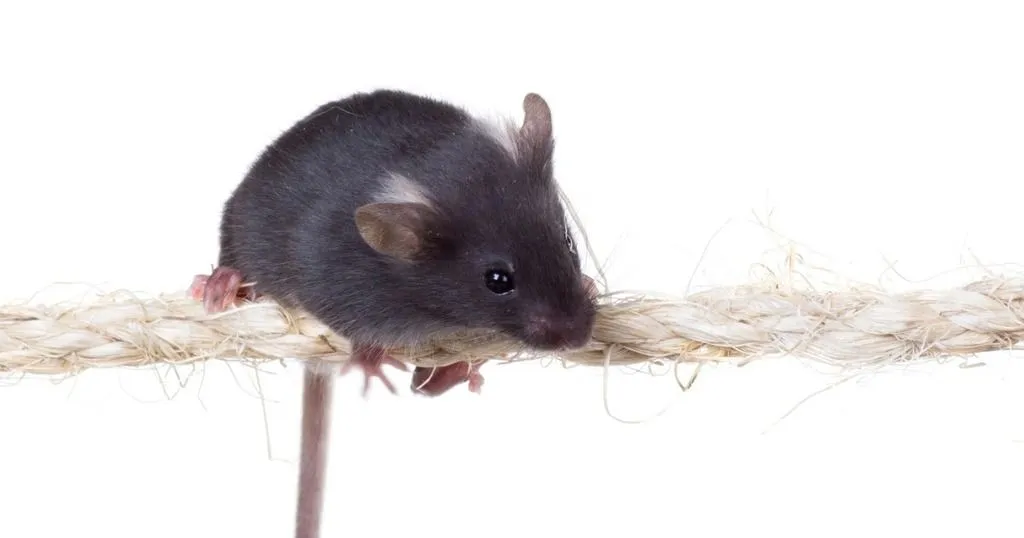
Half a year ago, I wrote about rats on the CatWalk XT system, and we added a great white paper written by Kristina Ängeby Möller to the collection. Today, I am very excited to tell you that Marcella Cline (University of Washington) and Dr. Donna Cross (University of Utah) are so kind to share their insights on working with mice on the CatWalk XT system in both a blog post and a white paper. Enjoy!
Traumatic brain injury (TBI) represents a significant health concern worldwide. While animal models have been remarkably successful in furthering our understanding of TBI, an assessment of subtle motor deficits in mouse models that arise post-injury can be challenging. In this post, we’ll outline some of the common tests currently used by researchers to assess motor deficits in mice following TBI, and give you a basic understanding of the protocols used for these tests.
Rotarod
Perhaps the most common test available to detect motor function in mice, the rotarod test consists of a rotating beam, on which mice are required to walk. The speed of rotation is gradually increased until the mouse falls from the rod or the trial ends, and time spent on the device without falling is recorded.
The rotarod is a well-characterized test of gross motor function(1), and has been proven useful in TBI models(2).
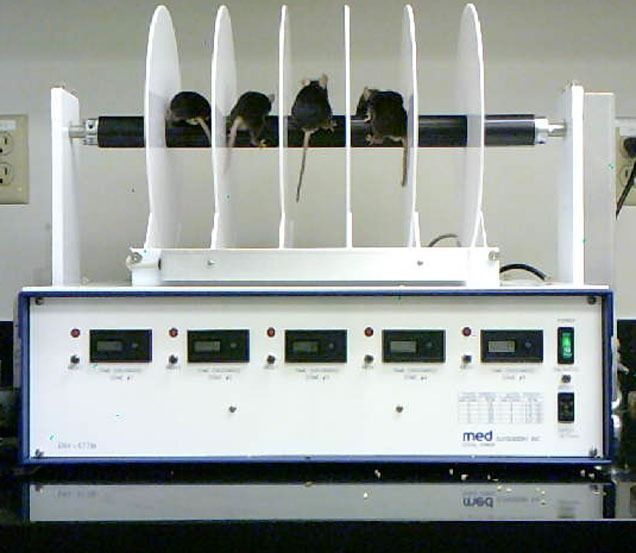
Gridwalk test
The gridwalk test consists of an elevated grid surface (shown: 30 L x 35 W x 31 H cm with grid spacing of 2.5 cm), on which the mouse is placed and allowed to explore. The number of times a mouse attempts to place weight on a foot falling between the wire grids (an action termed a ‘foot-fault’) is scored.
This particular test is especially useful in models of unilateral TBI, as the number of foot-faults made by the affected (contralateral to injury) side can then be compared to the total number of foot-faults made to give researchers an idea of limb bias(see 3).
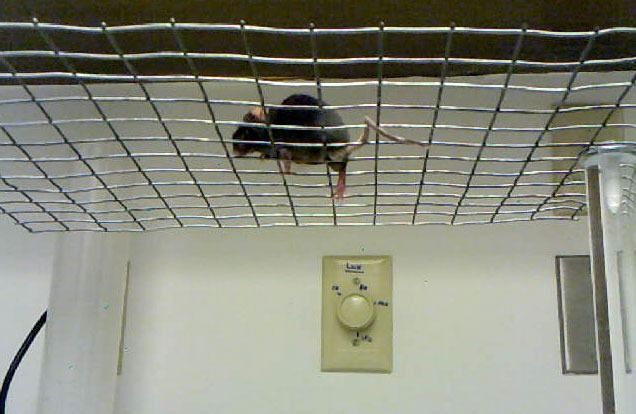
Beam balance
The beam balance/walk test, while similar to the rotarod, is useful for measuring more subtle motor deficits. Mice are placed on a long, suspended beam, and allowed to walk from one end to the other. The number of foot-faults (in this case, when a paw slips from the beam) are recorded.
As with the gridwalk test, the beam balance is useful when testing unilateral injury models, as it gives researchers the opportunity to analyze countra- versus ipsilateral limb involvement(1).
Noldus CatWalk Gait Analysis
The CatWalk automated gait analysis system (Noldus Information Technology, Wageningen, The Netherlands) consists of a 1.3-m-long glass plate walkway, into which green light is injected from the side. A camera underneath the glass plane and projected upward records green paw prints as the mouse makes its way across the walkway, from one end to the other.
Following the identification and labeling of each footprint using Noldus software, an extensive array of data related to gait, paw placement and locomotion can be produced and subsequently analyzed.
The CatWalk is a highly sensitive gait analysis tool, capable of detecting very subtle motor deficits which tests of gross motor dysfunction (such as the rotarod) may miss. A main advantage of this system over other tests of motor function, is the relative degree of observer-independent assessment and analysis of disrupted gait. This apparatus has been used successfully to detect subtle motor changes in mice following TBI in a number of recent studies(3,4).

Proper assessment of the motor deficits associated with TBI is crucial when using mice to model neurological injury. For studies investigating a potential therapeutic intervention for TBI, behavioral tests that can reliably distinguish TBI from non-TBI animals are necessary if researchers hope to detect a drug effect on outcomes.
While the tests described here do not represent all of those available to researchers, they are excellent and efficacious measures of motor function, which can be readily implemented in most labs. For most studies, a combination of these tests will provide a sensitive and comprehensive evaluation of post-injury outcome as well as an objective measure of efficacy for therapeutic development in TBI.
Marcella M Cline, BS & Donna J Cross, PhD
These autors also wrote a white paper with tips and tricks they learned in their research with TBI mice on the CatWalk XT system. Download it now!
References
- Curzon, P.; Zhang, M.; Radek, R.J.; Fox, G.B. (2009). The behavioral assessment of sensorimotor processes in the mouse: Acoustic startle, sensory gating, locomotor activity, rotarod, and beam walking. In: Buccafusco JJ, editor. Methods of Behavior Analysis in Neuroscience. 2nd edition CRC Press; Boca Raton, 20–31.
- Onyszchuk, G.; Al-Hafez, B.; He, Y.; Bilgen, M.; Berman, N.; Brooks, W. (2007). A mouse model of sensorimotor controlled cortical impact: Characterization using longitudinal magnetic resonance imaging, behavioral assessments and histology. Journal of Neuroscience Methods, 160(2), 187-196.
- Cross, D.J.;Garwin, G.G.; Cline, M.M.; Richards, T.L.; Yarnykh, V.; Mourad, P.D.; Ho, R.J.Y.; Minoshima, S. (2015). Paclitaxel improves outcome from traumatic brain injury. Brain Research, doi:10.1016/j.brainres.2015.06.006
- Neumann, M.; Wang, Y.; Kim, S.; Hong, S.; Jeng, L.; Bilgen, M.; & Liu, J. (2009). Assessing gait impairment following experimental traumatic brain injury in mice. Journal of Neuroscience Methods, 176, 34-44.
Related Posts
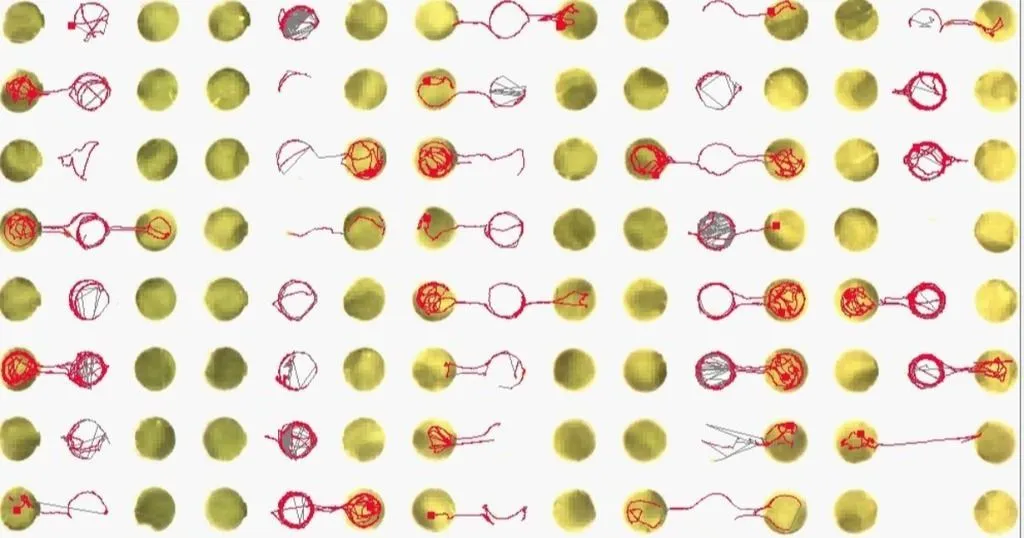
Screening insecticides for efficacy or tolerance
